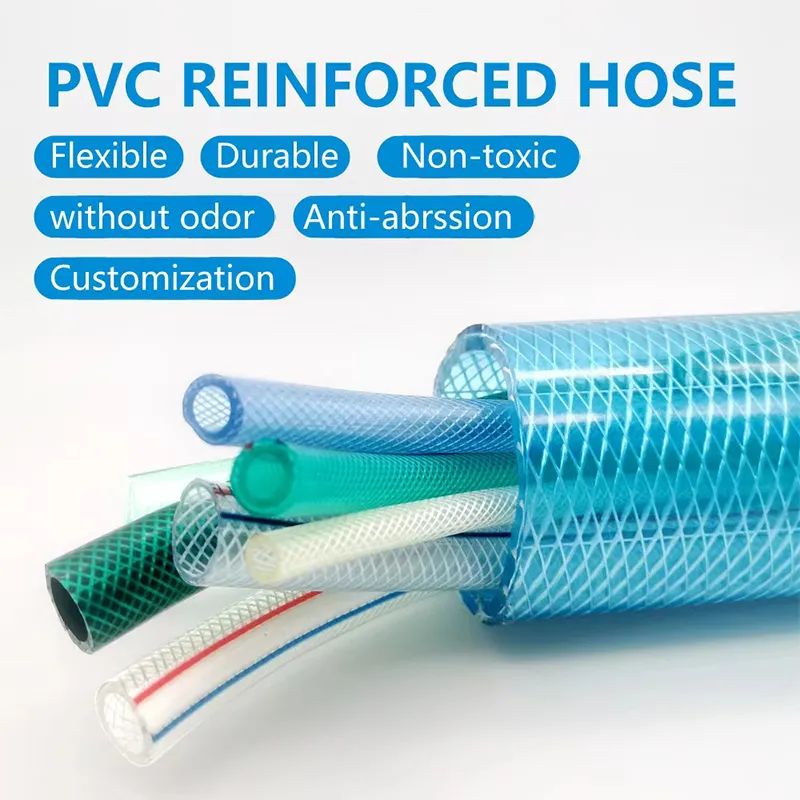oxy acetylene hose
Understanding Oxy-Acetylene Hoses A Comprehensive Guide
Oxy-acetylene welding, a process that uses a mixture of oxygen and acetylene gas to produce a high-temperature flame, is fundamental in metalworking and fabrication industries. At the core of this welding technique lies the oxy-acetylene hose, a critical component that ensures the safe and efficient transportation of gases from the cylinder to the torch. In this article, we will explore the intricacies of oxy-acetylene hoses, including their construction, types, safety considerations, and maintenance.
Construction of Oxy-Acetylene Hoses
Oxy-acetylene hoses are specifically designed to carry two different gases one for oxygen and the other for acetylene. These hoses are typically constructed from durable materials that can withstand high pressures and temperatures. The primary materials used are rubber or thermoplastic compounds, which are reinforced with fiber to enhance their strength and flexibility.
Hoses come in distinct colors—the oxy hose is usually green, while the acetylene hose is red. This color-coding is critical for ensuring that users can quickly identify the correct hose and avoid any potentially dangerous mix-ups.
Within the hose, there are often multiple layers. The inner layer is where the gas flows, while the outer layer provides protection against abrasion and environmental factors. Strong fittings, usually made from brass or other metals, are attached at both ends to connect the hoses securely to the gas tanks and welding torch.
Types of Hoses
There are primarily two types of oxy-acetylene hoses single-line and dual-line.
1. Single-Line Hose This type of hose is less common and is typically used in specific applications. It consists of a single line through which both gases flow, but it requires careful handling to prevent cross-contamination.
2. Dual-Line Hose This is the most widely used type. It features separate lines for oxygen and acetylene, making it safer and more efficient. The dual-line configuration helps to minimize the chances of mixing the gases before they reach the torch, which is crucial for maintaining optimal combustion and preventing dangerous backfires.
Safety Considerations
Safety is paramount when working with oxy-acetylene equipment. The hoses are designed to withstand high pressures, but they must be inspected regularly for signs of wear, damage, or leaks. Here are some essential safety tips
oxy acetylene hose

- Regular Inspection Frequently check hoses for cracks, abrasions, or any signs of deterioration. Damaged hoses should be replaced immediately to prevent accidents.
- Proper Storage Store hoses in a cool, dry place, away from direct sunlight or extreme temperatures, which can degrade the material.
- Avoiding Cross-Connection Always connect the correct hose to each respective gas tank and torch. Ensure fittings are tight to prevent any gas leaks.
- Use Flashback Arrestors These devices are crucial for protecting the equipment and the operator from the dangers of flame travel through the hoses.
- Secure Connections Ensure that the hoses are properly secured and cannot be easily knocked over, which can cause disconnections and leaks.
Maintenance of Oxy-Acetylene Hoses
Maintaining your oxy-acetylene hoses is vital for prolonging their lifespan and ensuring safety during use. Some maintenance steps include
- Cleaning Regularly clean the fittings and ensure they are free from any debris that might hinder the connection.
- Proper Usage Avoid using hoses that are too long for the job, as excess length can increase pressure drop and make handling cumbersome.
- Replace Old Hoses Even with regular maintenance, hoses have a finite lifespan. It's advisable to replace hoses that are older than five years or exhibit signs of wear.
Conclusion
Understanding oxy-acetylene hoses is essential for anyone involved in welding and metalworking. These hoses are not just simple conduits for gases; they are critical components that influence the safety and efficiency of the welding process. By knowing their construction, types, and how to properly maintain them, you can ensure that your oxy-acetylene setup operates smoothly and safely. Whether you are a professional welder or a hobbyist, paying attention to these details can lead to more successful, safe, and efficient welding projects.
-
Top Quality Oxy Acetylene Hoses for Sale Fit for Welding DemandsNewsJul.28,2025
-
The Future of Pneumatic Air Tubes in IndustryNewsJul.28,2025
-
Superior and Reliable LPG Hose Pipe Solutions for Every NeedNewsJul.28,2025
-
Exceptionally Durable and Versatile Premium Braided PVC TubingNewsJul.28,2025
-
Best Adapters for Connecting Garden Hose to PVC Pipe ConnectionsNewsJul.28,2025
-
The Essential Role of LPG Hoses in Safe and Efficient Gas DistributionNewsJul.16,2025














